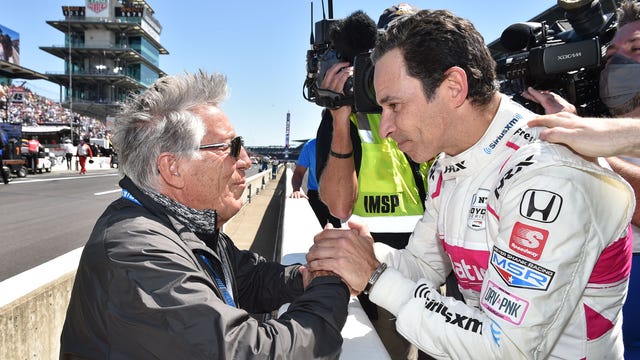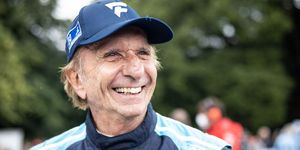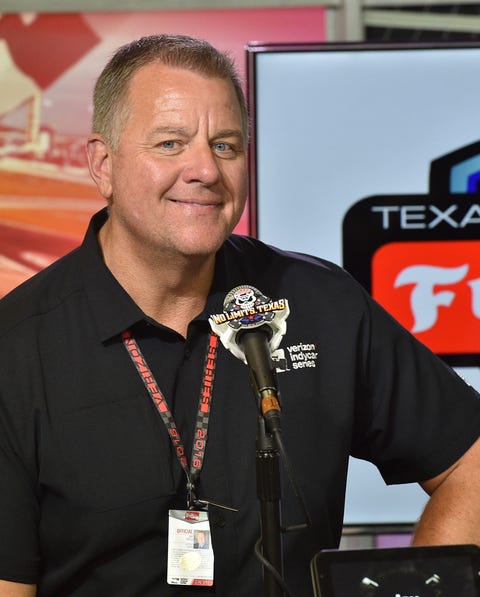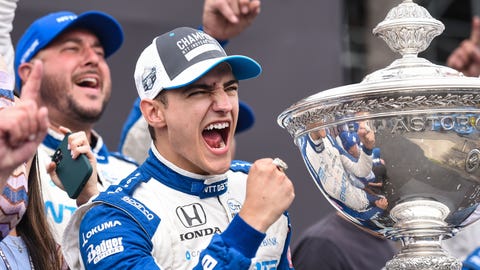Plenty of Reasons to Celebrate the 2021 NTT IndyCar Season
It’s been a little over one month—September 27, to be exact—since the 2021 NTT IndyCar Series season concluded, with Alex Palou earning the championship.
While he’s looking forward to the start of the 2022 season, now less than four months away—February 27 in St. Petersburg, Florida—IndyCar president Jay Frye is still reveling in the numerous successes achieved in the 2021 season.
“There was so many different data points and different things that happened this past season, there’s almost too many,” Frye told Autoweek. “How do you differentiate all of the successes, from Helio (Castroneves) winning his fourth Indianapolis 500 to having nine different winners from eight countries, which ties a record.
“And then there was 40 percent of the field won a race, which shows great depth, to four first-time winners. I think the generational thing with the four first-time winners was cool. We still have a lot of great veteran drivers and they’re very helpful to the young drivers on and off the track.
“There’s all kinds of things about this season that were cool about the season. It was just an amazing time to be in IndyCar.”
When Frye prepared a speech for the post-season awards banquet earlier this month, he was faced with a conundrum because there was such a significant number of accomplishments in 2021.
“It was such a great season, there were so many things actually that when I came up with a list, it was so long that we had to cut it down,” Frye quipped.
Frye agreed that IndyCar needed a season like 2021 to help erase much of the disappointment and frustration from 2020, which saw several races cancelled or moved due to the COVID-19 pandemic.
“Yeah, 2020 was hard on all of us, for lots of reasons. Part of it wasn’t that much different because they kind of felt like they blended together. I mean, remember, we come up with a schedule for 2021 last fall. And then before you know it, we were changing before the season starts.
‘So there was always that in the back of your mind, there was always that where you woke up every day, and you weren’t exactly sure, you think you got a good plan. But we got really good at pivoting from our plans and understanding what we needed to do and how to do it.”
The season’s highest point was the Indianapolis 500.
First, the race returned to its traditional Memorial Day weekend slot—complete with over 135,000 fans in the stands, after 2020’s rescheduled August 23rd event that was unprecedentedly held without fans due to the pandemic.
But equally as important was Helio Castroneves’ emotional fourth career Indy 500, tying him with legendary drivers A.J. Foyt, Al Unser and Rick Mears for the most wins in the Greatest Spectacle In Racing.
Then there was the successful street race in Nashville that energize a city.
“The Helio thing at the 500 was definitely a moment,” Frye said. “You look at all sports that have had moments throughout their history—and maybe we hadn’t had a moment for a while—and that was definitely a moment, right?
“It was something that was very unique. To have a four-time winner, somebody who is still current going for five (500 wins) next year is obviously big. So, yeah, again, it’s been an exciting time.”
Now that 2021 is in the rearview mirror, Frye and the rest of the IndyCar community has settled in for a long vacation. But the start of the 2022 campaign is only 154 days off.
So what does Frye and IndyCar do for an encore? For as important as it is to build upon 2021’s momentum, 2022 will also be a crucial campaign as it will be the final season that the circuit runs its current open-wheel race cars before shifting to a revolutionary hybrid model in 2023.
“I think 2022 will look a lot like 2021,” Frye said. “The depth of the field is amazing. And if you look at the nine winners out of 24 (full-time cars) in 2021, there was another handful that you would have thought they should have won at probably some point but didn’t, right?
“One of the things we look at is car count. A couple years ago, we got to 20 to 22 (full-time) cars. This year, we were at 24; we even had 28 in a few races, which was the most we’ve had in 10 years.
“Next year, we’re looking to have 26 or 27 full-time.”
IndyCar also had a number of other highlights in 2021 including the most-watched Indy 500 (5.581 million viewers) since 2016 (and up more than 50 percent of the number of viewers from the rescheduled 2020 edition of the 500).
Also, IndyCar enjoyed the most-watched overall average viewership (1.223 million viewers) across the entire season since 2016, and a 19 percent overall average viewership from 2020 (1.027 million).
Follow Autoweek contributor Jerry Bonkowski on Twitter @JerryBonkowski
Source: Read Full Article








